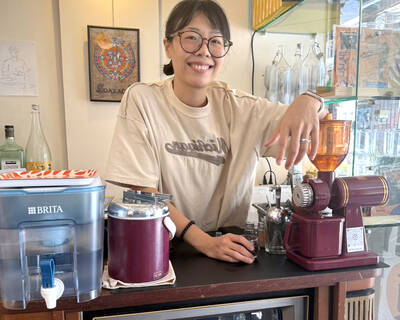The object of 144-tile Taiwan mahjong is to obtain a collection of tiles that form a specific hand before your opponents do. The face values of the tiles you hold are then added up and after several hands the player with the highest score wins.
Players must decide on two things before beginning any game:
Firstly, the value of each unit, or tai (
Each round is associated with a wind and this influences the score of certain hands. The first-round wind is always the East (
If the dealer's hand contains any flower tiles they are placed face-up on the table surface, next to his hand. The dealer then announces that he will trade his flowers by saying buhua (
After all the flowers have been traded out of the dealer's hand, he/she asks the player on the right if he or she wishes to trade. After that it is that player's turn to trade in any flowers from his/her hand. This continues until all players have traded in all their flowers.
A player must draw a tile from the wall at the beginning of his/her turn. When the wall has been opened and East has taken the first four tiles -- two stacks -- from the wall South proceeds to take the next four tiles and so on.
This is repeated three times until all the players have 16 tiles each which are arranged in front of them standing on edge so that they alone can see the symbols engraved on the tile's faces.
If a flower tile is drawn during this process, it is immediately placed face up on the table and a replacement is taken from the loose tiles at the end of the wall.
After drawing tiles the player then considers what tiles will be needed to complete their winning hands, as well as choosing what tiles they will discard. All discarded tiles are placed in the middle of the table.
The object is to select the following combinations:
Run of three is a sequence of three numeral tiles of the same suit.
A Triple is three identical tiles.
Four-of-a-kind is four identical tiles.
If a player finds he/she has a hand consisting of five of any of the above sets of tiles, plus a pair of any tiles, then he or she has won the hand.
Of course, not all games are won and if all the tiles, except for the 16 dead ones, are used up and no player has a complete hand, a draw is called and a new hand dealt.

Cheng Ching-hsiang (鄭青祥) turned a small triangle of concrete jammed between two old shops into a cool little bar called 9dimension. In front of the shop, a steampunk-like structure was welded by himself to serve as a booth where he prepares cocktails. “Yancheng used to be just old people,” he says, “but now young people are coming and creating the New Yancheng.” Around the corner, Yu Hsiu-jao (饒毓琇), opened Tiny Cafe. True to its name, it is the size of a cupboard and serves cold-brewed coffee. “Small shops are so special and have personality,” she says, “people come to Yancheng to find such treasures.” She

The low voter turnout for the referendum on Aug. 23 shows that many Taiwanese are apathetic about nuclear energy, but there are long-term energy stakes involved that the public needs to grasp Taiwan faces an energy trilemma: soaring AI-driven demand, pressure to cut carbon and reliance on fragile fuel imports. But the nuclear referendum on Aug. 23 showed how little this registered with voters, many of whom neither see the long game nor grasp the stakes. Volunteer referendum worker Vivian Chen (陳薇安) put it bluntly: “I’ve seen many people asking what they’re voting for when they arrive to vote. They cast their vote without even doing any research.” Imagine Taiwanese voters invited to a poker table. The bet looked simple — yes or no — yet most never showed. More than two-thirds of those

In July of 1995, a group of local DJs began posting an event flyer around Taipei. It was cheaply photocopied and nearly all in English, with a hand-drawn map on the back and, on the front, a big red hand print alongside one prominent line of text, “Finally… THE PARTY.” The map led to a remote floodplain in Taipei County (now New Taipei City) just across the Tamsui River from Taipei. The organizers got permission from no one. They just drove up in a blue Taiwanese pickup truck, set up a generator, two speakers, two turntables and a mixer. They

Former Chinese Nationalist Party (KMT) chairwoman Hung Hsiu-chu’s (洪秀柱) attendance at the Chinese Communist Party’s (CPP) “Chinese People’s War of Resistance Against Japanese Aggression and the World Anti-Fascist War” parade in Beijing is infuriating, embarrassing and insulting to nearly everyone in Taiwan, and Taiwan’s friends and allies. She is also ripping off bandages and pouring salt into old wounds. In the process she managed to tie both the KMT and the Democratic Progressive Party (DPP) into uncomfortable knots. The KMT continues to honor their heroic fighters, who defended China against the invading Japanese Empire, which inflicted unimaginable horrors on the